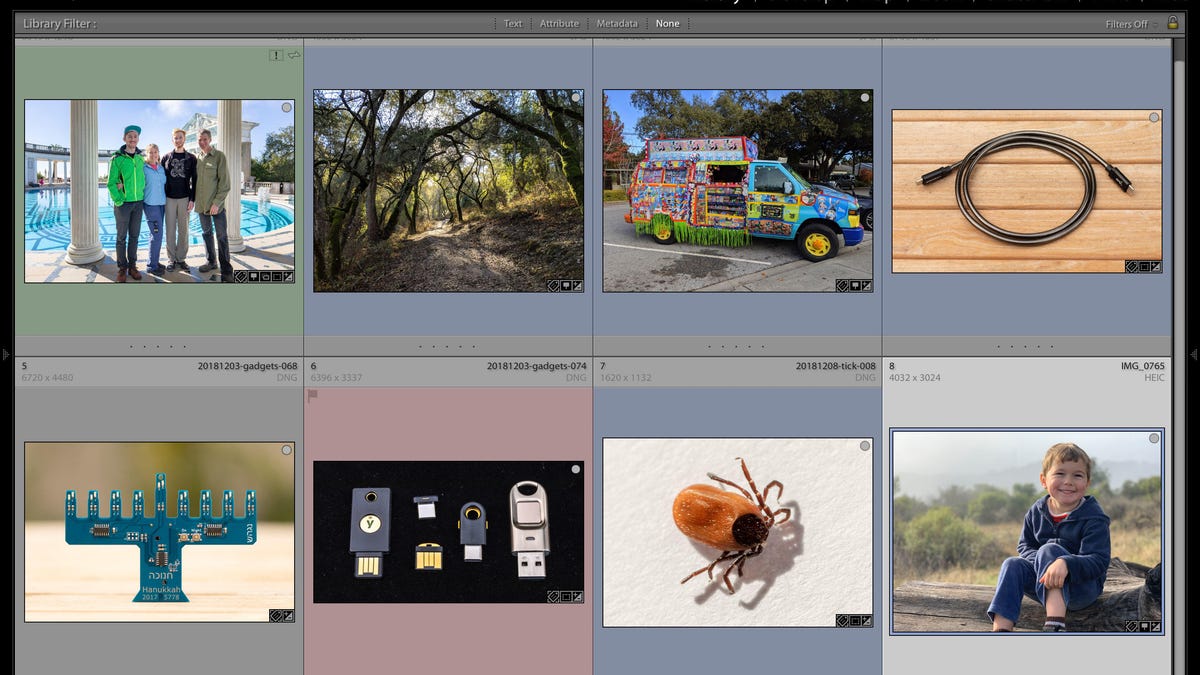Lightroom supports photos from iPhone XS, Pixel 3, Galaxy Note 9
Plus Adobe's software is much smarter about creating panoramas.

October's Lightroom Classic CC update added more sophisticated editing of color hue, saturation and tonality.
Adobe released updates for its Lightroom software Tuesday to support the latest phones from Apple , Google and Samsung , and to try to address a little of customers' never-ending desire for better performance.
Lightroom CC and its cousin, Lightroom Classic CC, now are tuned to properly handle the color and correct lens problems of Apple's iPhone XS , XS Max and XR; Google's Pixel 3 and Pixel 3 XL , and Samsung's Galaxy Note 9 , Adobe said in a blog post. Apple's new iPad Pro , LG's G7 ThinkQ, GoPro's Hero7 Black and Nikon's Z6 also are supported.
Lightroom is a widely used tool for cataloging and editing photos. It's a couple of steps ahead of phones' built-in tools like Google Photos or Apple Photos when it comes to organization and editing power, but it costs more, too -- at least $10 per month, with prices going up if you need more online storage space.
You've almost certainly heard of Adobe's flagship photo-editing software, Photoshop, but Lightroom is probably the one you should care about if you're a photography enthusiast. It doesn't offer Photoshop's range of abilities for editing and compositing photos, but it's still advanced for editing. And more importantly, it's designed to handle our entire collection of photos -- a potentially mammoth challenge when it's easy to take shots every day with our smartphones and amass thousands of photos.
There are two main versions of Lightroom. The older lineage of Adobe's software, Lightroom Classic CC, offers more advanced options but runs only on Windows and MacOS machines; the newer Lightroom CC runs on phones and in web browsers as well, but requires online storage space from Adobe.
Among other changes:
- The new Lightroom Classic CC 8.1 version is faster when scrolling through your grid of photos on high-resolution displays, faster to switch between the library and develop modules, and faster to handle batch jobs like importing and exporting lots of photos.
- Lightroom Classic also gets a big change to its feature for merging multiple shots into a single panorama or high dynamic range (HDR) photo. Previously, it required source photos all to have been shot at the same focal length,
pixel
resolution and orientation, but not anymore. The flexibility should be especially useful for panoramas where, for reasons of perspective and geometry, you might want to take portrait orientation or wider-angle views at the left and right edges of a span of photos.
- Lightroom Classic also now lets you rearrange the order of editing modules in the develop mode. If you care a lot about noise reduction and sharpening but not perspective correction, move up the details module and demote the transform module.
- For organizing photos faster in Lightroom CC, you can now designate a specific folder you might want for lots of photos. Once you do, tapping "T" adds the photo to the album.
- Lightroom CC also is faster when importing images from a memory card or a USB-connected camera, Adobe said.
CNET's Holiday Gift Guide: The place to find the best tech gifts for 2018.
Taking It to Extremes: Mix insane situations -- erupting volcanoes, nuclear meltdowns, 30-foot waves -- with everyday tech. Here's what happens.

